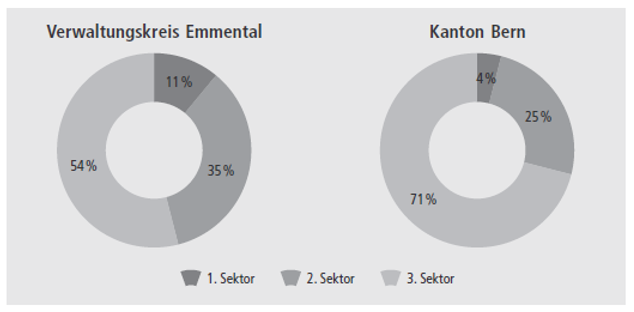Sample project
Is there a Regional Innovation System in the Emmental?
When one thinks of the region Emmental, the Swiss cheese "Emmentaler" comes to mind. Less well known is the fact that the region is home to numerous innovative export-based companies and that the secondary sector is an important pillar of the Emmental's economic structure. World-leading companies such as Jakob AG Rope Systems in Trubschachen or PB Swiss Tools in Wasen, i.E., not only produce in the Emmental but also drive research and development at this location.
This project deals with the innovative development of rural regions such as the Emmental and focuses on the following questions:
- What role does the Emmental play as a location for innovative companies?
- How do companies benefit from the more peripheral location of Emmental, and to what extent do advantages and disadvantages arise from this location?
- Can one speak of an Emmental Regional Innovation System?
 Figure 1: Share of full-time equivalents by sector in 2015, source: Swiss Federal Statistical Office.
Figure 1: Share of full-time equivalents by sector in 2015, source: Swiss Federal Statistical Office.
We analyze companies and their innovation behavior in rural and peripheral regions such as Emmental, Gruyère, or Appenzell. It should be noted that a peripheral location not only has disadvantages but that companies also see the unique advantages and that they exploit them in a targeted manner.
Our analyses suggest that companies in peripheral regions use the local environment and appreciate the quality of life on the one hand and that they also obtain external knowledge via innovation networks that they cultivate. In sum, it can be said that Regional Innovation Systems do exist in the periphery, but that they have a different spatial orientation than their urban counterparts.